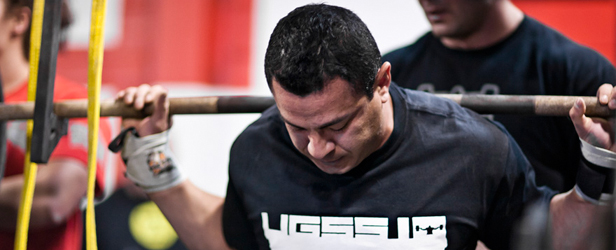
"In sport, mental imagery is used primarily to help you get the best out of yourself in training and competition. The developing athletes who make the fastest progress and those who ultimately become their best make extensive use of mental imagery. They use it daily as a means of directing what will happen in training and as a way of per-experiencing their best competition performances."
— Terry Orlick
What a well said quote. It sounds pretty easy and manageable to do, but at the end of the day, why don’t more people use this mental imagery tactic for weight training? We believe Arnold Schwarzenegger said it best: “Bodybuilding is much like any other sport. To be successful, you must dedicate yourself 100 percent to your training, diet, and mental approach.”
It’s pretty much like anything else in life. You create a vision of success, and you make it become reality. The same thing goes for athletes when it comes to hitting the weights. An athlete should always have a mental image of himself performing great and winning. Vice versa, a weightlifter should always have a mental image of himself having a great workout. It doesn’t matter if you feel crappy that day. You still visualize yourself having that superb, intense workout.
In this article, we'll discuss maximizing strength training using mental imagery. The anecdotal evidence is clear that individuals who make use of mental imagery have found increased confidence during their resistance training workouts. But at present, the exact mechanisms by which mental imagery works remain unclear, although recent work using brain imaging techniques has advanced our knowledge by confirming that the right hemisphere of the brain is the primary imagery center.
If only science and research were black and white, right? Let’s take this analogy for example. It's lower body day and you're going for a personal best on squats for 405 pounds. Wouldn’t it make more sense to have a mental image of yourself nailing that squat as opposed to doubting yourself and questioning if you can indeed get that personal best squat? It should be no contest on this analogy that you would, and should, mentally prepare and imagine nailing that personal best attempt.
In a review by Richert, Gilbert, and Baldis, they explain that imagery can be performed from either an internal or external perspective. They clarify that internal imagery is where the individual visualizes an image from the first person point of view, while external imagery is from the third person point of view. The reviewers explain that mental imagery has been found to be most effective when the images are clear and include specific details. They note that using information from various senses can help to improve the clarity of the images and increase the effects of using the imagery. The reviewers note that controllability is also a key factor in using imagery successfully. The correct use of imagery is to visualize successful outcomes and avoid considering or imagining unsuccessful outcomes.
You might be asking how in the world one performs an internal or external perspective. A wise tool to incorporate is imagery scripts. Imagery scripts are sequential descriptions of movement including key words and phrases. The reviewers suggest that an imagery script for a weightlifting movement, such as a deadlift, is organized around four phases: a pre-workout phase, a pre-lift phase, a during the lift phase, and a post-lift phase.
For example, on the deadlift, the pre-workout phase is the athlete mentally preparing himself for the energy level his body will require. In the pre-lift phase, the athlete builds on the momentum of the pre-workout phase by visualizing more specific components to the particular lift, such as setting up in position to deadlift. The during the lift phase is just a continuation of the pre-lift phase. Finally, the post-lift phase is an opportunity to reinforce a successful lift. In more modern terms: to nail that damn deadlift!
Wrapping this all up
In a nutshell, your mentality becomes your reality. Mental imagery can be used as a way of improving strength training performance. The reviewers from above (Richter, Gilbert, and Baldis) showed that the correct use of mental imagery is to visualize successful outcomes and avoid considering or imagining unsuccessful outcomes. Also, you can use mental scripts before, during, and after a lift to improve strength training performance. So before entering the gym, be fearless, have positive thoughts about your workout or setting that PR, and be fully immersed in the process. The minute you get in there and think negatively, become scared, get distracted, or doubt yourself, we promise you will have a half-ass workout or won’t hit a PR. Your mentality truly does become your reality!
References:
- Contreras Bret and Chris Beardsley.
- Peak Performance (2009) Mental Imagery.
- Richter, Gilbert, Baldis (2012) Maximizing Strength Training Performance Using Mental Imagery. Strength and Conditioning Journal 11.










1 Comment